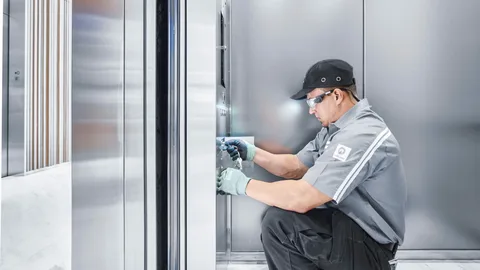In the realm of wastewater management, lift stations stand as pivotal infrastructures facilitating the efficient transportation of sewage from lower to higher elevations, ensuring the smooth functioning of sewage systems in both urban and rural settings. As populations grow and urbanization spreads, the demand for effective lift station installations escalates. In this discourse, we delve into the intricate world of lift station installation techniques, exploring the fundamental principles, advanced methodologies, and emerging trends that characterize the pursuit of mastery in this critical domain.
The Backbone of Wastewater Management
At its core, a lift station functions as a vital component in sewage conveyance systems, particularly in areas where natural gravitational flow is insufficient to transport wastewater to treatment facilities. These stations play a transformative role by utilizing mechanical means to elevate sewage to a level where it can resume its journey through gravity-fed pipelines or be directly pumped to treatment plants. By breaking the gravitational barrier, lift stations ensure the seamless operation of sewage networks, mitigating the risk of backups, overflows, and environmental contamination.
Key Components and Design Considerations
Successful lift station installation hinges on meticulous planning and adherence to engineering principles. The components of a lift station typically include pumps, wet wells, control panels, valves, and alarm systems. The selection and configuration of these components depend on various factors, including hydraulic requirements, anticipated flow rates, system redundancy, and site-specific conditions.
Proper sizing of pumps is crucial to ensure optimal performance and energy efficiency. Engineers must consider factors such as peak flow rates, friction losses, and head requirements when selecting pumps for a lift station. Additionally, the design of wet wells demands careful attention to hydraulic dynamics, structural integrity, and access for maintenance activities. Incorporating redundancy measures, such as backup pumps or dual electrical feeds, enhances the reliability and resilience of lift station operations, reducing the risk of service disruptions and downtime.
Advanced Installation Techniques
In recent years, advancements in technology and construction practices have revolutionized the landscape of lift station installations, enabling engineers to push the boundaries of efficiency, durability, and sustainability. One notable innovation is the utilization of pre-fabricated lift station packages, which streamline the installation process and minimize on-site construction activities. These modular solutions, often constructed off-site and delivered ready for deployment, offer advantages in terms of cost-effectiveness, quality control, and accelerated project timelines.
Furthermore, the integration of smart sensors, telemetry systems, and remote monitoring capabilities empowers operators to remotely monitor lift station performance, detect anomalies, and proactively address issues before they escalate. Real-time data analytics enable predictive maintenance strategies, optimizing equipment lifespan and minimizing operational costs over the long term. Additionally, advancements in materials science have led to the development of corrosion-resistant coatings, high-strength composites, and durable polymers, enhancing the longevity and reliability of lift station infrastructure in harsh operating environments.
Environmental Considerations and Sustainability
As the imperative for environmental stewardship grows, lift station installations are increasingly scrutinized through the lens of sustainability and ecological impact. Efforts to minimize energy consumption, reduce carbon emissions, and enhance resource efficiency drive innovation in lift station design and operation. The adoption of energy-efficient pumps, variable frequency drives, and renewable energy sources, such as solar power, holds promise for reducing the carbon footprint of lift station operations while lowering operational costs.
Moreover, the implementation of green infrastructure practices, such as rainwater harvesting, stormwater management, and decentralized wastewater treatment, presents opportunities to synergize lift station installations with broader sustainability initiatives. By integrating nature-based solutions and low-impact development strategies into lift station projects, engineers can mitigate the strain on conventional wastewater infrastructure, enhance resilience to climate change, and promote ecological balance within urban ecosystems.
Challenges and Future Directions
Despite the progress made in lift station technology, several challenges persist in the quest for mastering installation techniques. Aging infrastructure, urbanization pressures, and limited funding pose significant obstacles to the rehabilitation and expansion of lift station networks in many regions. Additionally, the complexity of regulatory compliance, permitting processes, and stakeholder engagement requires a multidisciplinary approach to navigate successfully.
Looking ahead, the future of lift station installations is poised for further innovation and evolution. Emerging technologies such as artificial intelligence, predictive analytics, and robotics hold the potential to revolutionize maintenance practices, optimize energy consumption, and enhance system resilience. Moreover, advancements in modular construction methods, 3D printing, and prefabrication techniques promise to streamline project delivery and improve cost-effectiveness.
Conclusion
In conclusion, mastering lift station installation techniques is an ongoing endeavor that demands a blend of engineering expertise, technological innovation, and environmental consciousness. By embracing cutting-edge solutions, upholding best practices, and fostering collaboration across disciplines, we can surmount the challenges ahead and pave the way for a more sustainable and resilient wastewater infrastructure landscape.
As we ascend toward a future defined by smarter, greener, and more efficient lift station installations, let us remain steadfast in our commitment to excellence and stewardship, ensuring that these essential systems continue to safeguard public health, protect the environment, and sustainably manage our precious water resources.

